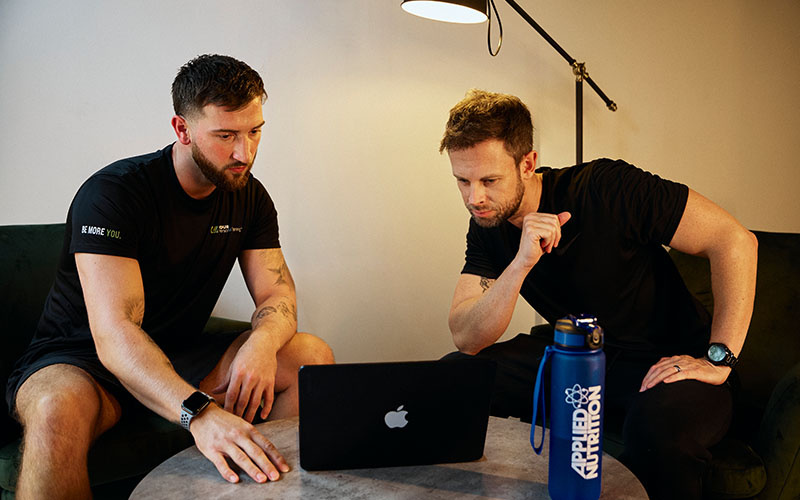Introduction:
As the fitness industry continues to evolve, the choice between online coaching and face-to-face personal training has become increasingly relevant. To make an informed decision, it is crucial to consider the governance and regulatory bodies that oversee these services, as well as the average client length of stay and long term career prospects. However, it's important to acknowledge that both approaches have their pitfalls for qualified personal trainers.
In this comprehensive review, we will explore these factors and shed light on the potential challenges that personal trainers may encounter with each strategy.
Governance and Regulatory Bodies:
Face-to-face personal training operates within the framework of established governance and regulatory bodies. These bodies ensure that personal trainers adhere to industry standards, possess proper certifications, and follow guidelines for professional practice thus protecting industry professionals. The presence of these regulatory bodies provides a level of accountability and reassurance to both trainers and clients. Largely successful personal trainers operate on a self-employed basis and as such benefit from flexible working arrangements, ability to earn more, take time off for holidays and to built a sustainable career, however being self employed also requires a lot of dedication, hard work and a requirement to invest a lot of time in the early days for little reward.
On the other hand, online coaching operates in a non-regulated environment. Few online coaches hold recognised certifications, there is currently no dedicated governing body overseeing the entire online coaching industry. This lack of central regulation creates a challenge for qualified personal trainers seeking to differentiate themselves from unqualified or inexperienced individuals. It becomes the responsibility of the trainer to showcase their expertise, credibility, and commitment to maintaining professional standards. Building a strong online presence, obtaining reputable certifications, and actively engaging with clients can help mitigate this challenge.
The allure of living a ‘laptop life’ is often a powerful draw for budding coaches to partake in online coaching, however for a qualified personal trainer the water is murky and those partaking must accept that they will be competing alongside many self proclaimed coaches with varied and often unsubstantiated outspoken opinions (after all that is the game).
'Body transformations' and 'quick results' are common themes in online coaching to help capture the attention of new clients with sustainability and lifestyle change often becoming a secondary thought.
Average Client Length of Stay:
Client retention is a critical factor for the success of any personal trainer, regardless of their chosen strategy. In face-to-face personal training, the close physical proximity and personal connection can lead to longer client tenures. The immediate feedback, hands-on guidance, and accountability during each session foster a sense of trust and motivation. However, one potential pitfall for personal trainers in this context is client dependency. If a trainer becomes the sole source of motivation and accountability for their clients, there is a risk that clients may struggle to sustain their fitness journeys independently. Trainers must strike a balance between providing support and empowering their clients to develop self-discipline and self-motivation.
Conversely, online coaching often attracts clients seeking long-term lifestyle changes and flexibility. Regular check-ins, progress tracking, and ongoing communication can facilitate sustained client engagement. However, the lack of face-to-face interaction poses a challenge in building strong virtual relationships. Non-verbal cues and immediate physical feedback are absent, making it crucial for trainers to establish effective channels of communication and ensure clarity in instructions. Additionally, some clients may struggle with accountability in the absence of in-person sessions, requiring trainers to deploy more innovative strategies to keep clients motivated and engaged.
In short the average length of stay for a face to face client is 10-24 months whereas online coaching is still a relatively unknown quantum but early signs suggest less than 6 months is the average commitment of an online client.
Navigating the Pitfalls:
For face-to-face trainers, staying updated with industry standards and certifications is vital. Streamlining administrative tasks and seeking support from administrative professionals or fitness organisations can help alleviate the burden. Building trust, empowering clients, and encouraging self-sufficiency can mitigate client dependency.
For online coaches, building a strong online presence and establishing credibility through testimonials, success stories, and reputable fitness certifications are essential. Investing time and effort in effective communication methods, such as video calls and detailed program explanations, can help compensate for the lack of physical presence. Employing creative accountability strategies, like virtual challenges and online communities, can foster a sense of connection and motivation.
Conclusion:
YOUR Personal training are the largest Personal Training brand in the UK operating across hundreds of fitness facilities and supporting Personal Trainers in gyms and digitally. Co-owner and operations director James Lorey commented: “We have observed good and bad practice across both modes of coaching, the ability to reach end users has never been easier however online coaching certainly needs more control, the reputation is being damaged due to lack of quality assurance and unfortunately all coaches then get tarnished with the same brush”.
Choosing between online coaching and face-to-face personal training requires careful consideration of governance, regulatory bodies, and average client length of stay. Whilst both approaches present potential YOUR Personal Training very much believe that a 70:30 split of face to face : online coaching is optimal to enable fitness professionals to develop a core, sustainable income line whilst offering services to those outside of their immediate geographical area. This can provide some welcome variety to a typical operating day and enable online communities to work with authentic, reputable Personal Trainers who deliver sustainable results.

